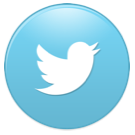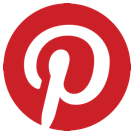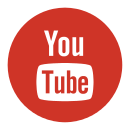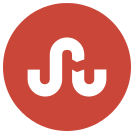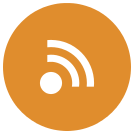Leaking Breasts - Friend or Foe?
Leaking breasts are a sign that your hormones do their job and initiate let-down. If it doesn’t bother you, leaking is not a bad sign. At times, however, it can be uncomfortable and even embarrassing.
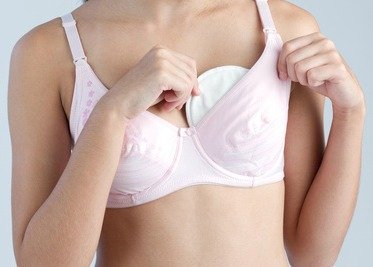
Why Do Breasts Leak?
① Most nursing women are leaking milk in week 1-6 after the
delivery. This is when milk supply is getting established.
By the end of week 6 your breasts adjust to the amount of milk they have to hold. Past this week you may experience occasional leaking at let-down or when you miss a feeding or pumping.
② Leaking breasts at let-down is a common phenomenon. Your breasts are full and you may see milk spraying out of your nipples. This may also happen while you are taking a shower. Warmth and relaxation stimulates milk release.
③ If your breasts leak excessively past that time, you are probably dealing with an oversupply (overactive let-down).
④ Leaking milk is also your body’s natural response to overfilled ducts. It helps reduce the risk of duct clogging.
⑤ When your baby is nursing on one breast, the other may leak
milk. It is normal, as baby sucking stimulates let-down.
⑥ There are cases when leaking is unmanageable and breasts leak constantly between feedings. In most severe cases leaking breasts result from mom’s chronic fatigue, nervousness and sleep deprivation. It can only be cured by getting enough sleep, eating a well-balanced diet and talking to a lactation consultant about your emotional state.
How Do I Manage Leaking Breasts?
- It is important to
keep your breasts clean and dry to prevent nipple soreness and infection. Use breast pads and change them often to keep breasts dry (see below).
- Besides, leaking breasts are harder for the baby to manage. Milk sprays vigorously into your baby’s mouth. He/she gulps the milk fast and swallows a lot of air. This may cause gassiness and discomfort. Burp your baby frequently.
- If you feel that your breasts are overfilled before the feeding, express some milk first. After the baby empties the breasts, you can feed him/her expressed milk. This way your baby won’t have to deal with an excessive milk flow.
- Since most common leaking occurs at let-down, you can take measures when you feel it's coming. Try pressing on your nipples with your fingers.
Try This Trick: If you are out and about, do it discreetly by crossing your arms at your breast level and pushing your palms or thumbs against your nipples.
- Not all women always feel when the let-down
is happening. In fact, some women never feel it. In this case you need to
always be ready for leakages. Wear disposable or washable nursing pads (see below).
- Expose your breasts to air and sunlight as much as possible.
- Are you still wearing breast shields (shells) to correct your flat or inverted nipples? It may be the reason why your breasts leak. Breast shields are firm plastic cups with an opening at the top that you wear between the feedings. The cup presses on the breast and pushes the nipple out into the opening. This pressure may cause milk to leak. Try using nipple shields instead. Click here for more information about nipple shields.
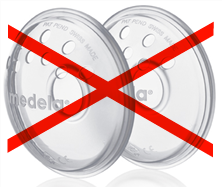
Breast shield (shell)
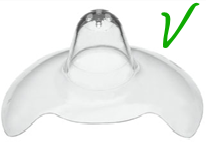
Nipple shield
- If your suspect your leaking is due to oversupply, here is how to manage it.
What Breast Pads Should I Use?
It is important to divert moisture from the breasts and nipples, rather than lock it in. So it's best to avoid the pads that advertise no leakages for hours.
Among them are pads with plastic rim around for better leak-proof. They attach tightly to the breast and prevent nipple skin from breathing.
Plastic or silicone pads are another example. They keep moisture locked in, which may lead to nipple soreness and infection.
Silicone and plastic pads are ok to use for a couple of hours. If you need to attend an important meeting for example, silicone pads would work well in this situation.
But if you need to use the pad overnight or in the comfort of your home, go cotton. If one cotton pad is insufficient, try layering several pads.
You can also place a towel on top of the bra under your sleepwear. Yes, the bra will probably get soaked through too, but it is better than locking in the moisture inside a silicone pad.
Disposable cotton bra pads are my favorite. They are easier to use and keep their shape compared to the washable ones. Out of all the pads I used Medela disposable bra pads worked the best.
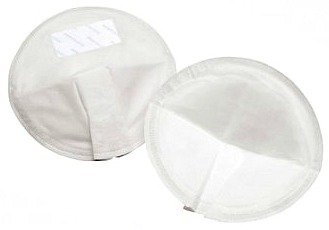
-> They are super absorbent and thin at the same time.
-> They are invisible underneath the clothes and they have an adhesive tape that keeps them in place.
-> My son stopped waking up at night for feedings very early and my breasts were constantly full. These bra pads absorbed all the leaking milk and gave me an extra couple of hours of sleep.
-> They are also great, because they are individually wrapped, so I didn't have to look for a clean and private place in my purse to keep them. Visit link below for details and other moms' reviews:
There is one great reason to feel blessed and happy about your leaking breasts: You got milk! With techniques mentioned above and after getting used to this condition, you and your baby will both enjoy breastfeeding.
There are many ways to show your love and devotion to your kids and to win their trust. Breastfeeding is the most natural one.
Yours,
Viktoriya
Home › Breastfeeding Problems › Leaking Breasts





